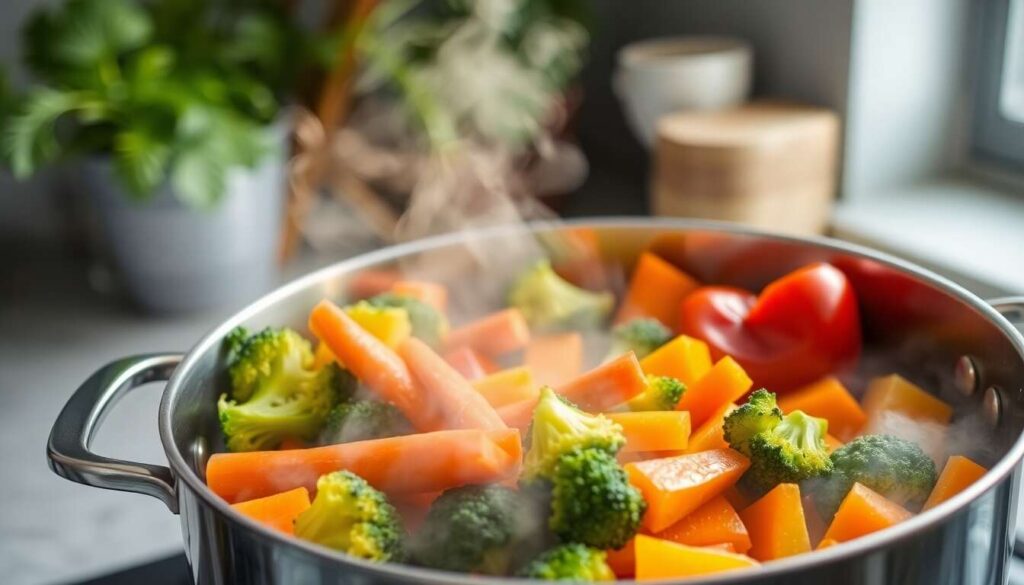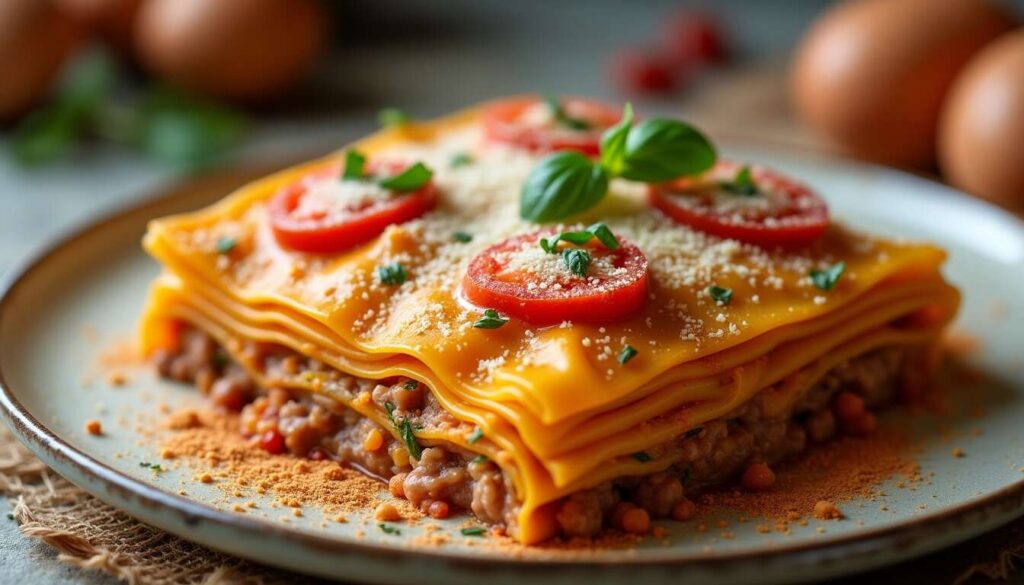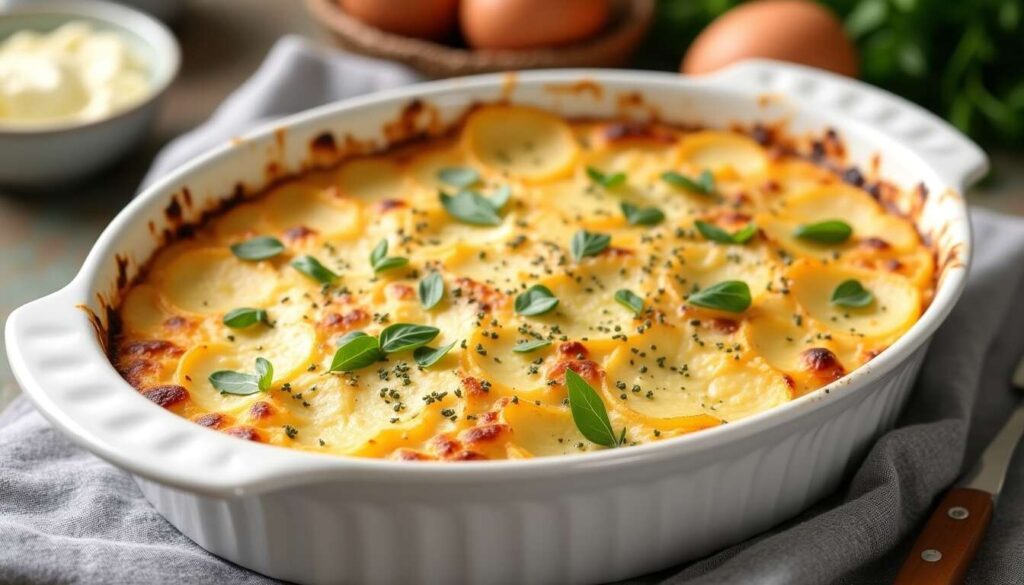The way we cook our vegetables is crucial for maintaining their nutritional qualities. At the core of a healthy diet lies the preservation of vitamins and nutrients. To achieve this, it is essential to avoid certain common mistakes and adopt cooking methods that respect the natural properties of food. This article will guide you through pitfalls to avoid and techniques to favor for a more nutritious cuisine.
Understanding Vitamin Loss During Cooking
The Nature of Vitamins
Vitamins are micronutrients that are vital for the proper functioning of our bodies. They are divided into two categories: water-soluble (such as vitamins B and C) and fat-soluble (like vitamins A, D, E, and K). Water-soluble vitamins are particularly sensitive to heat and water, making them more prone to loss during cooking.
The Impact of High Temperatures
During cooking, a significant portion of vitamins may be lost due to high temperatures. For instance, boiling vegetables can result in a loss of up to 50% of their vitamins. This loss is even more pronounced with prolonged and intense cooking times.
Statistics on Vitamin Depletion
| Cooking Method | Vitamin C Loss (%) |
|---|---|
| Boiling | 50% |
| Steaming | 10-15% |
| Microwaving | 30% |
With this information, it becomes essential to understand the mistakes to avoid in order to retain the maximum nutrients in our dishes.
Common Mistakes to Avoid for Maximum Nutrient Preservation
Mistake 1: Cooking in Boiling Water
One of the most frequent errors is cooking vegetables in boiling water. This method, while simple, severely impacts the preservation of nutrients contained within the vegetables. It is vital to limit this technique to avoid compromising the nutritional value of your food.
Mistake 2: Prolonged Cooking
Avoid cooking vegetables for excessive periods. Long cooking times, especially at high temperatures, result in a massive loss of vitamins and minerals. Quick cooking at low temperatures should therefore be favored to retain nutrients.
Mistake 3: Excessive Use of Oil
Adding too much oil during cooking can not only alter fat-soluble vitamins but also affect the overall quality of the dish by incorporating unnecessary fats. Choose healthier alternatives, such as cooking without added fats.
- Avoid the compulsive checking of food by frequently lifting the pot lid, as this prolongs cooking times.
- Prefer cutting vegetables into uniformly sized pieces for even cooking.
It is time to discuss steam cooking, which emerges as a more favorable alternative for preparing vegetables.
Steaming: Your Health Ally
Why Choose Steaming?
Steaming is known for safeguarding the nutrients of vegetables by preventing their immersion in water. This method ensures optimal preservation of vitamins and minerals, rendering your dishes both healthy and flavorful. It is particularly suited for fragile vegetables rich in vitamin C.
Respecting Natural Flavors
Cooking with steam not only preserves nutrients but also the natural flavors of the vegetables. This allows for the preparation of delicious dishes without the excessive addition of seasonings or sauces.
How to Maximize Steaming Benefits
- Avoid overcrowding your steamer basket to allow adequate steam circulation.
- Use an airtight lid to prevent heat loss and ensure even cooking.
While steaming is ideal for nutrient preservation, let’s take a closer look at the advantages offered by sautéing.
The Benefits of Sautéing
The Principle of Sautéing
This cooking technique involves cooking food gently in its own moisture over low heat. This method is particularly perfect for vegetables that require slightly longer cooking times while preserving their vitamins and flavors.
Health Benefits
Sautéing allows for the maximum conservation of nutrients, similar to steaming. In addition, it often uses little or no fats, making it a healthy and balanced choice.
Tips for Successful Sautéing
- Utilize a pot with a tight-fitting lid.
- Add a bit of broth or water to start the cooking process effectively.
- Keep the heat low to avoid overcooking.
Sautéing is a gentle and nutritious method. Now, let’s explore the increasing popularity of wok cooking.
Why Favor Wok Cooking?
Characteristics of the Wok
The wok is a highly popular utensil known for its ability to cook food quickly at high temperatures. This method helps preserve the color, nutrients, and texture of vegetables while enhancing their flavor. The wok stands out for its ease of use and incredible versatility in the kitchen.
Benefits for Vitamins
Thanks to the rapid cooking it enables, the wok helps minimize vitamin and mineral loss and maintains the integrity of the dietary fibers in vegetables. This cooking method is recognized for being less destructive than frying or conventional oven methods.
Tips for Optimal Wok Usage
- Preheat your wok thoroughly before adding vegetables.
- Use a minimal amount of oil to avoid excess fat absorption.
- Cook in small batches to control the cooking of each ingredient.
Let us now reflect on various alternative cooking methods that can enrich your culinary practice.
Evaluating Alternative Cooking Methods
Experimental Cooking Techniques
Today, many people are eager to try new cooking methods such as sous-vide, which preserves numerous nutrients thanks to precise temperature control.
Reimagined Classic Methods
Traditional practices, such as steam roasting or grilling, have been improved to be more respectful of food. They offer options for cooking vegetables that better preserve their nutritional qualities.
Comparative Advantages
| Method | Nutrient Preservation | Cooking Time |
|---|---|---|
| Steaming | Excellent | Quick |
| Oven | Good | Medium |
| Sous-vide | Excellent | Long |
With all this information at hand, it becomes easier to make informed choices in the kitchen. Now, let’s look at some practical tips for maintaining a healthy diet in your daily life.
Practical Tips for Healthy Cooking
Adopt Smart Culinary Habits
For healthy cooking, start by simplifying your preparation process. Prepare your vegetables just before cooking to avoid oxidation and preserve freshness.
Useful Equipment for Optimized Cooking
Invest in quality utensils, such as a good steamer or wok, to facilitate the implementation of healthy cooking techniques.
Elements to Include in Your Culinary Routine
- Take the time to plan your meals in advance to maintain a balanced diet.
- Opt for fresh, seasonal ingredients rich in nutrients.
- Emphasize gentle and quick cooking methods such as steaming and wok cooking.
By incorporating these principles into your daily cooking, you can easily and effectively enhance the nutritional quality of your meals.
Preserving the nutritional qualities of vegetables is essential for fully benefiting from their advantages. By avoiding common cooking mistakes and favoring methods such as steaming, sautéing, and wok cooking, you can maximize the nutrients in your dishes. To maintain a healthy kitchen, it is also advisable to equip yourself with the right tools and choose fresh, seasonal products. These simple gestures will allow you to enrich your diet while facilitating the preparation of delicious and nutritious meals.







